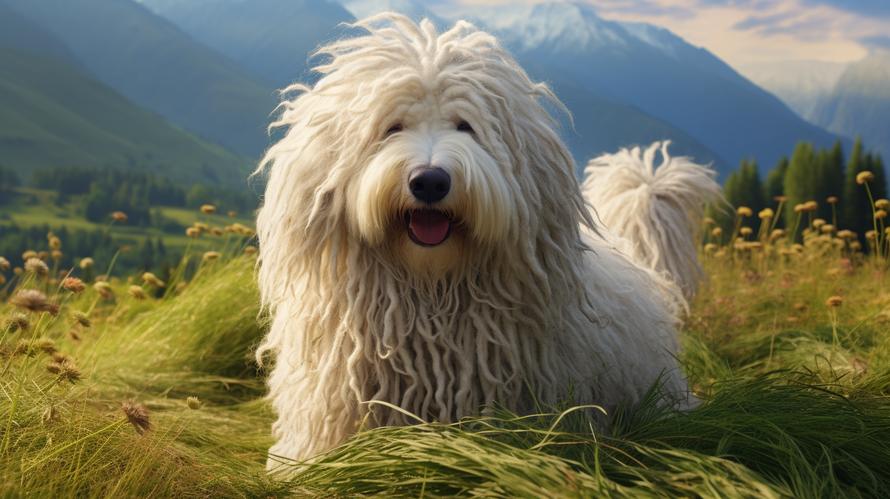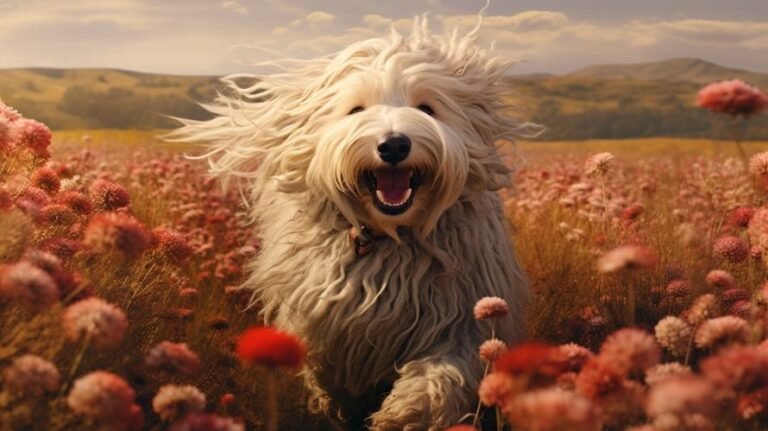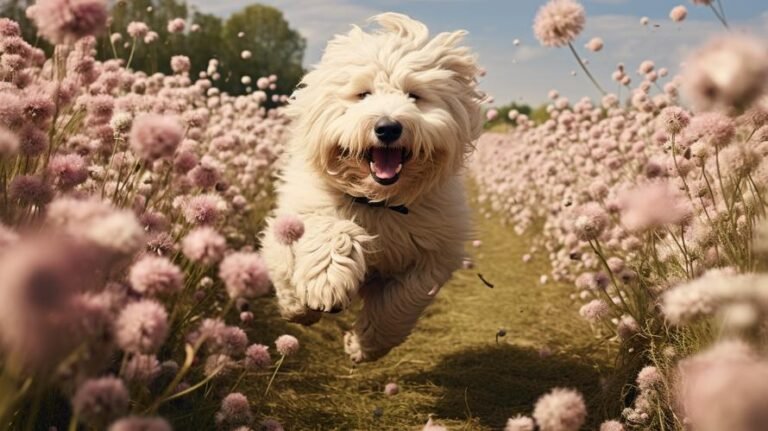Picture this, a large, loyal animal covered from head to toe in thick, white, cord-like fur. It might be easy to mistake this fluffy creature for a mop, but it’s actually a Hungarian dog breed known as the Komondor.
Yes, you heard it right. The Komondor is a distinct and eye-catching dog breed that is often mistaken in public for a mop or sometimes a wandering sheep. However, beneath their luxurious, corded exterior, the Komondor possesses a robust and sturdy physique.
So, is the Komondor a healthy breed? The short answer is yes, definitely. However, like humans, Komondors aren’t invincible and are susceptible to health conditions too. In this comprehensive article, we will delve deeper into the health aspects of this particular breed.
Let’s talk about their general health first. Komondors are typically sturdy dogs, often living up to 10-12 years, which is around the average lifespan for a large breed. Well-bred Komondor dogs don’t suffer from common health conditions like hip dysplasia or genetically inherited diseases as frequently as other breeds do. The restricted gene pool of Komondors, however, does make them more susceptible to specific health issues, like gastric torsion or bloat, a life-threatening condition if not treated immediately.
As their owner, you must create an environment and lifestyle that promotes good health for your Komondor dog. An imperative is a balanced diet. It prevents obesity, a rising concern in pet dogs. Working off their ancestry as herd protectors, Komondors love to exercise, making them less prone to weight-related problems if well-managed. Go ahead, take them for long walks or dance around in your garden. This breed loves all kinds of physical engagement.
Cleanliness is another vital element for a healthy Komondor. Due to their corded coat, the Komondors require regular bathing and grooming, which means they need your time and patience. Neglecting this aspect can lead to skin infections due to bacterial buildup in their corded locks.
Regular vet check-ups are also essential to keep the Komondor breed in a healthy state. Routine vet visits will catch any health issues early on, and treatment will manage it effectively.
Komondors are also prone to eye problems. The most common eye affliction in Komondors is entropion, where the eyelid rolls inward, causing discomfort and, if untreated, can lead to serious complications. Ensuring regular eye check-ups and immediate treatment of any eye problems is key to maintaining an eye-healthy Komondor.
Given their large size, joint issues could be a concern. But with healthy diet, exercise, and supplements, you can maintain joint health and prevent diseases like hip dysplasia. It’s also worth noting that Komondors have a higher pain tolerance than most breeds, which is a double-edged sword; while it means they’re tough, it also means they may not show symptoms of distress until an issue has escalated, which emphasizes the importance of regular vet visits.
Though generally a healthy breed, Komondors, like any other breed, can face certain health issues. However, with a conscientious breeding program, a well-monitored diet, regular exercise, grooming and routine veterinary visits, you can maximize a Komondor’s lifespan and ensure they remain the energetic, protective, and loyal companion you’d love to have around. The right preventive measures can often give you years of good health with your adorable mop-like friend.
To conclude, while the Komondor is a generally healthy breed, it requires good care and attention to make sure it stays that way. So, if you can provide for the needs of this unique and loving breed, they will pay you back with unwavering loyalty, love, and protectiveness. So, go ahead and adopt a Komondor if you’ve been considering it, and enjoy a unique friend for life.



